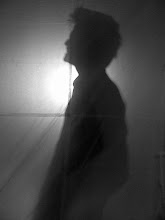deck
Most decks are constructed with a six to seven-ply cross-laminated maple wood. Some of them have special materials that help to keep the deck from breaking: such as fiberglass, bamboo, resin, Kevlar, carbon fiber, aluminum, and plastic. Some decks made from maple ply are dyed to create various different coloured ply. Modern decks vary in size, but most are 7 to 10.5 inches (17.78 to 26.67 centimeters) wide. Wider decks can be used for greater stability when transition or ramp skating. Skateboard decks are usually between 28 and 33 inches (71.12 and 83.82 centimetres) long. The underside of the deck can be printed with a design by the manufacturer, blank, or decorated by any other means. On early year 2010 a European Company Gravitis introduced the proprietary asymmetric shape, with decentered twin tips to enhance the rider's stance.


The longboard, a common variant of the skateboard, has a longer deck. This is mostly ridden down hills or by the beach to represent the riding of a wave in the ocean on a surfboard. This was created by two surfers; Ben Whatson and Jonny Drapper. One of the first deck companies was called "Drapped" taken from Jonny's second name. "Old school" boards (those made in the 1970s–80s or modern boards that mimic their shape) are generally wider and often have only one kicktail. Variants of the 1970s often have little or no concavity, whereas 1980s models have deeper concavities and steeper kicktails.
Grip tape, when applied to the top surface of a skateboard, gives a skater's feet grip on the deck. It is most often black but can come in a variety of colors including clear, allowing the top of the deck to be decorated. It has an adhesive back and a sandpaper-like top.


0 Komentar:
Posting Komentar
Berlangganan Posting Komentar [Atom]
<< Beranda